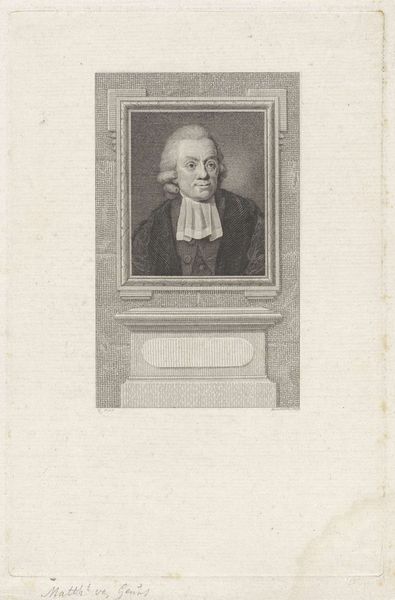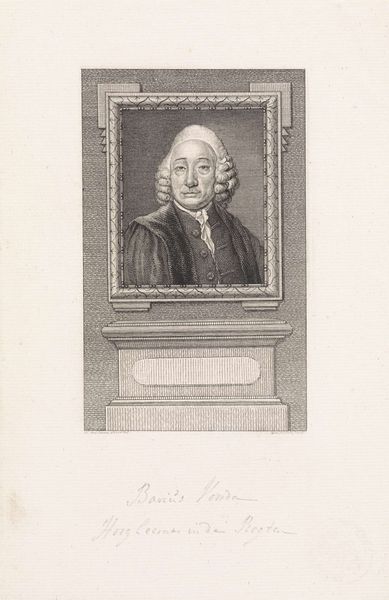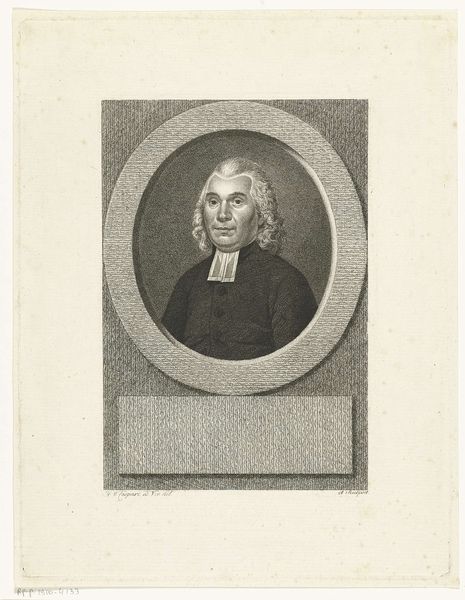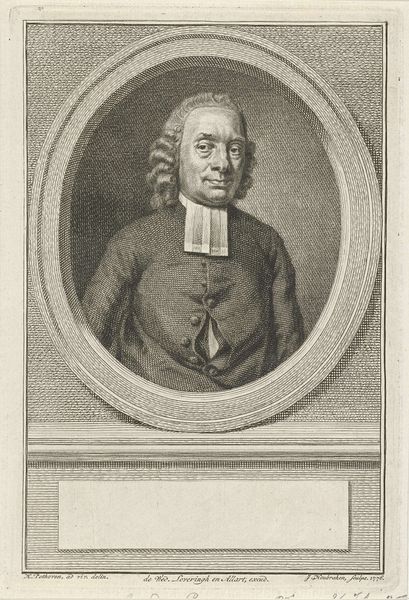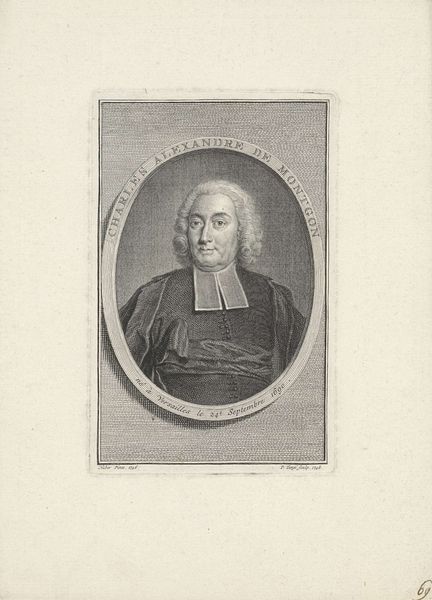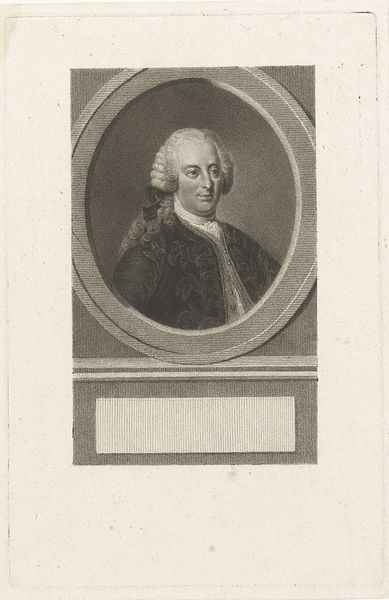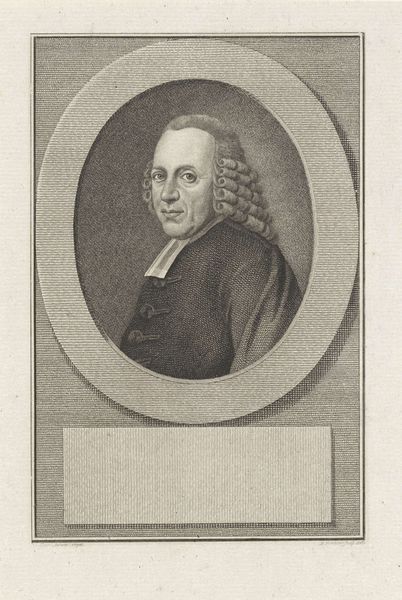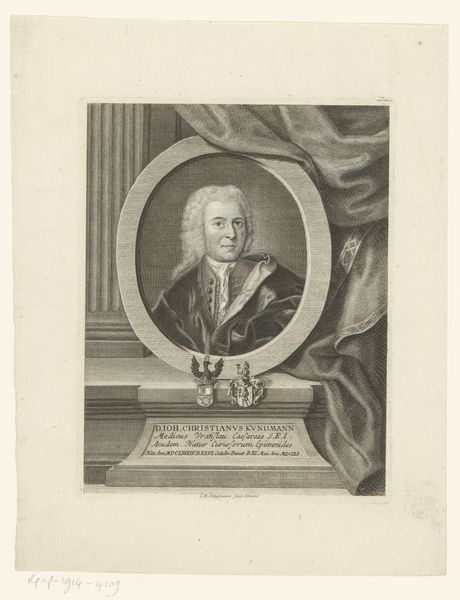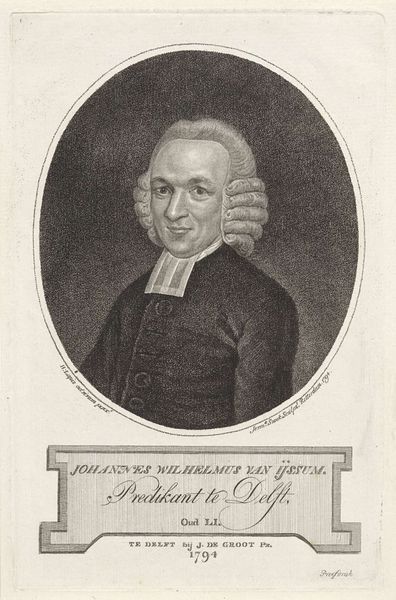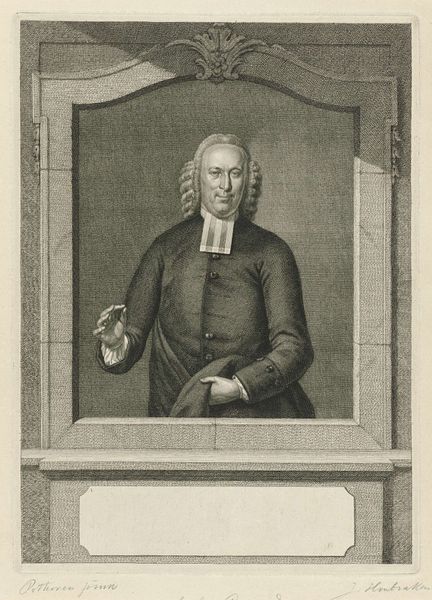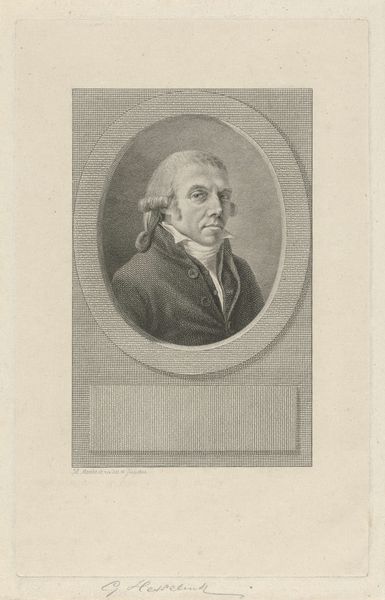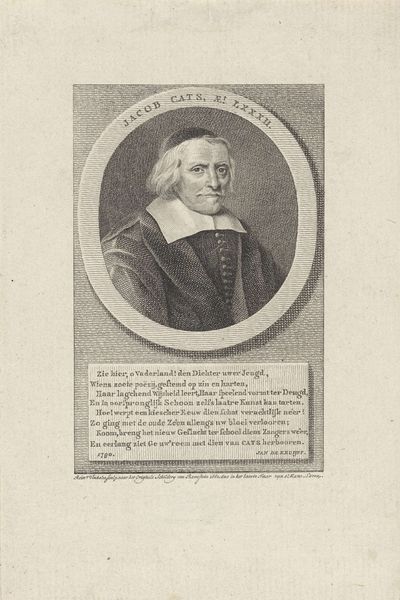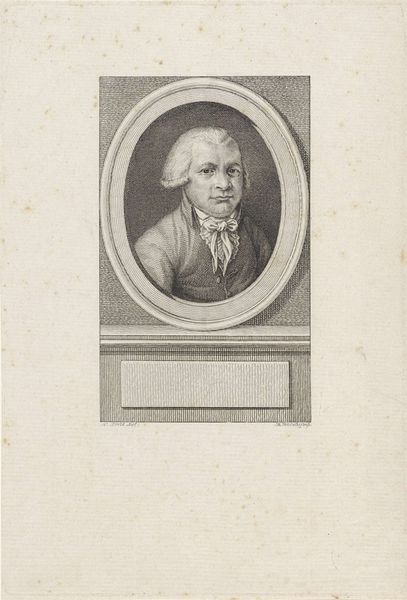
engraving
#
portrait
#
neoclacissism
#
old engraving style
#
historical photography
#
academic-art
#
engraving
#
realism
Dimensions: height 241 mm, width 156 mm
Copyright: Rijks Museum: Open Domain
Editor: This is "Portret van professor Adriaan Kluit," an engraving made sometime between 1787 and 1828, attributed to Ludwig Gottlieb Portman, now hanging in the Rijksmuseum. The tight, symmetrical composition is quite striking; it gives the portrait a very formal feel. How do you interpret the piece from a purely visual perspective? Curator: Precisely, it’s a structured engagement. The framing device immediately establishes order—an oval within a rectangle, a deliberate containment of the subject. Consider the texture achieved through the engraving technique; the varying densities of lines create both form and light. What do you observe about the light’s fall? Editor: I see that the light is focused mainly on the face, particularly the forehead, drawing my attention there first. Then, it casts deep shadows under his wig and along the sides of his face. It gives him a stern look, but I am interested to know, does that contrast of light do something to his position in the piece? Curator: It is structuring the composition: It is a strategic deployment that adds volume and definition. Observe how the starkness is somewhat softened by the curvature and fine detail of the wig. It introduces dynamism within this rigorous format. How might you consider the visual effect of the clothing? Editor: The clothing is plain, almost blending into the darker background. I’m guessing it helps to put the spotlight on the face, so the eye isn't distracted. This is how Portman can direct you where he wants you to focus, but also give this professor prominence by directing light on his forehead. Curator: Correct. And the clean lines reinforce the portrait's intellectual nature and avoid opulent distraction, as neoclassicism shuns flamboyance. Thinking structurally, this ensures the composition supports, rather than detracts, from the work's meaning. Editor: That makes so much sense; focusing on the lines and structures lets you dig into its meaning without all the noise of historical context, which makes it approachable and interesting. Curator: A useful and revealing practice in all your visual examinations.
Comments
No comments
Be the first to comment and join the conversation on the ultimate creative platform.

